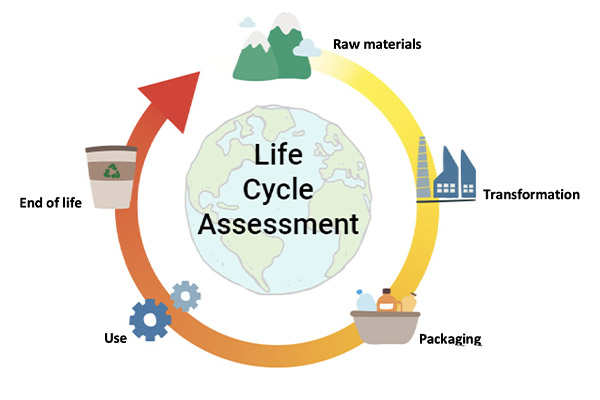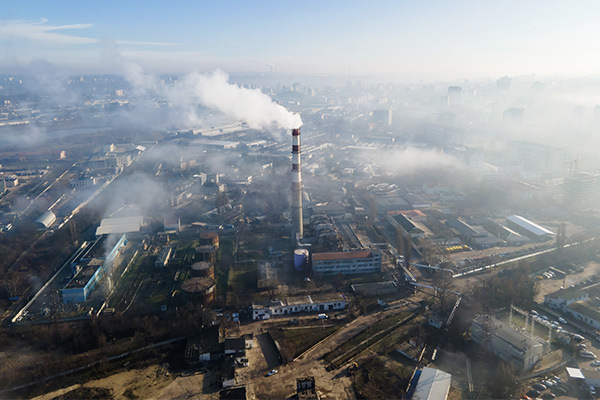Carbon footprint: what is it?
With this article, we would like to inaugurate a series of posts dedicated to air pollution from civil and industrial emissions. A better relationship with the planet starts with us, with our awareness. This is why we decided to start with the concept of carbon footprint, to underline how everyone is responsible for the environment, since everyone of us inevitably leaves a footprint on the planet.
What is a carbon footprint
A carbon footprint is a parameter established to estimate the greenhouse gas emissions generated by a product, service, organization, event or individual, and is generally expressed in tons of CO₂ equivalent (tCO₂eq). What does it mean?
According to the Kyoto Protocol, greenhouse gases to be included in the calculation are: carbon dioxide (CO₂), methane (CH₄), nitrous oxide (N₂O), hydrofluorocarbons (HFCs), sulfur hexafluoride (SF₆), and perfluorocarbons (PFCs). Tons of CO₂ equivalent are therefore nothing more than the equivalent, in CO₂, of the greenhouse effect produced by these gases. Let’s use an example.
Methane has a greenhouse effect about 25 times stronger than CO₂, therefore one tonne of methane counts as 25 tons of CO₂ equivalent.
But let’s take a step back: what exactly is CO₂?
CO₂, or carbon dioxide, is naturally present in the atmosphere, and is surely the most well known of greenhouse gases. Formed by one carbon atom and two oxygen atoms, its natural concentration in the air is about 400 parts per million (ppm), coming from natural processes, such as respiration, or combustion.
The carbon footprint of products, companies, and services
The carbon footprint of products and services considers overall emissions throughout their lifecycle, that is, “from cradle to grave”. The carbon footprint of organizations, on the other hand, refers to emissions over the annual business year. But what exactly does “cradle to grave” mean? Let's explore this concept that, better than others, can give us an idea of the true environmental impact of our lives.
When buying a product, have you ever wondered about its history? Have you ever wondered, for example, where it comes from exactly? Well, we all have the concept of the “Made in ...” label in mind, so naturally we are led to think that the product comes from the manufacturing company, and therefore the carbon footprint starts there. In reality, this is not the case, the emissions of a product begin with the extraction and processing of the raw materials that go into its manufacture, as well as the energy needed to do this.
The lifecycle of a product or service, of which we normally only know the “use” or “consumption” part, can be divided into five phases: the extraction of raw materials; their transformation; product packaging and transport; use; and disposal.

This gives us a more precise idea of what the real lifecycle of a product is, which goes far beyond our use and consumption. Even though it is quite common to think only of physical products when it comes to emissions and pollution, we should bear in mind that digital services are also part of the supply chain. Did you know, for example, how much pollution comes from video streaming? Any idea? Over 300 million tons of CO₂! Just think that watching 10 minutes of video consumes 1,500 times more electricity than charging a smartphone.
How are emissions calculated?
The way in which CO₂ emissions relating to a product or service are calculated is regulated by the technical specification ISO 14067, entitled “Greenhouse gases - Carbon footprint of products - Requirements and guidelines for quantification and communication ”.
For organizations, on the other hand, the standard UNI EN ISO 14064-1, entitled “Greenhouse gases - Part 1: Specification for the quantification, monitoring and reporting of project emissions and removals”, applies, which represents the first of 3 standards of the ISO 14064 series aimed at quantifying, reporting, reducing, absorbing, validating and verifying assertions on greenhouse gas (GHG) emissions.
Therefore, in addition to conducting the regulated analysis and measurement of CO₂ emissions, companies can implement a system to identify and cut emissions through the use of low-carbon technologies, and introduce measures to achieve “carbon neutrality”, such as planting trees, and investing in renewable energy production.1
1. Source: Ministry of Ecological Transition: https://www.minambiente.it/pagina/cose-la-carbon-footprint

Carbon footprint: why it affects us all
At first glance, it would seem that the responsibility for decarbonisation lies with companies. In reality, we are all implicated, as people who both request and receive products and services.
Furthermore, we can speak of the carbon footprint of an individual, who through their habits and daily actions makes their own contribution to the emission of greenhouse gases. For example, how do we get around? How and when do we use lighting, heating, etc.? What products do we buy?
The questions could go on. Becoming aware of the impact of our actions is already a first step towards a change in habits.
In the next posts, we will look more into several issues concerning heating and emissions that can help us make better choices and potentially reduce our carbon footprint.